Our sense of wonder began when the ferry to Spain’s Cies Islands departed for our daylong adventure. Heading up the Ria de Vigo from the commercial fishing port of Vigo, Spain it was a pleasant 40 minute journey to the three islands that make up this gorgeous archipelago.
From the moment we arrived on the main island there was a palpable sense of detachment, wonder and adventure as something primeval tugged at our soul. Perhaps it was the rhythmic swaying of the dune grasses or the sound of bird song that we had never heard before or simply the incredible feeling of being surrounded by water.
We were instantly captivated.
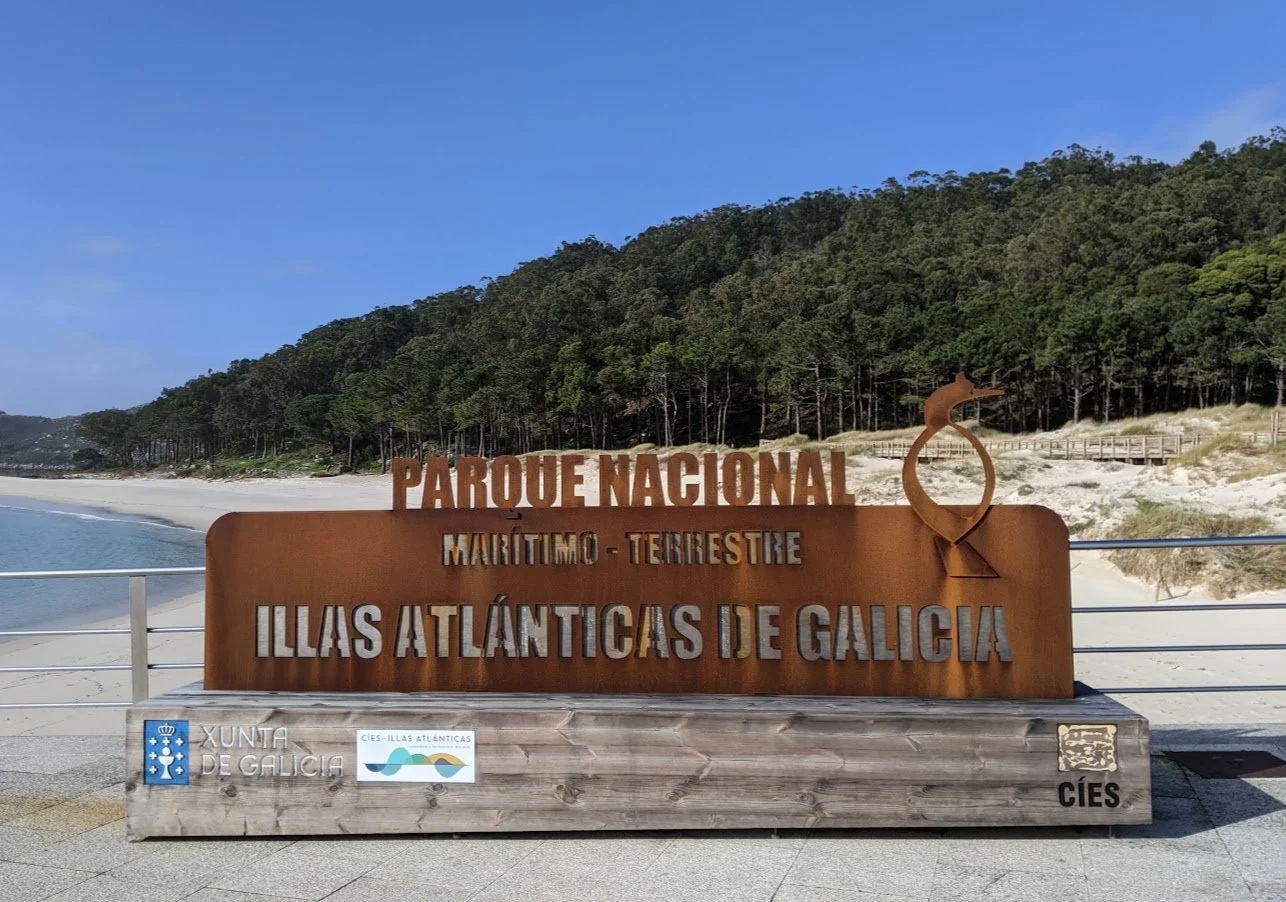
As the ferry approached the islands, hillsides covered in gorse, broom and asparagus, along with tall pines and eucalyptus, came into sharper view. Not to be outdone by the clear blue sky and the crystalline waters, it is the unspoiled, seductive Rodas Beach, with its sugary white sand that really grabbed our attention. Backdropped by enormous walls of tall green trees you don’t need to squint to imagine that you could be somewhere in the Carribean.
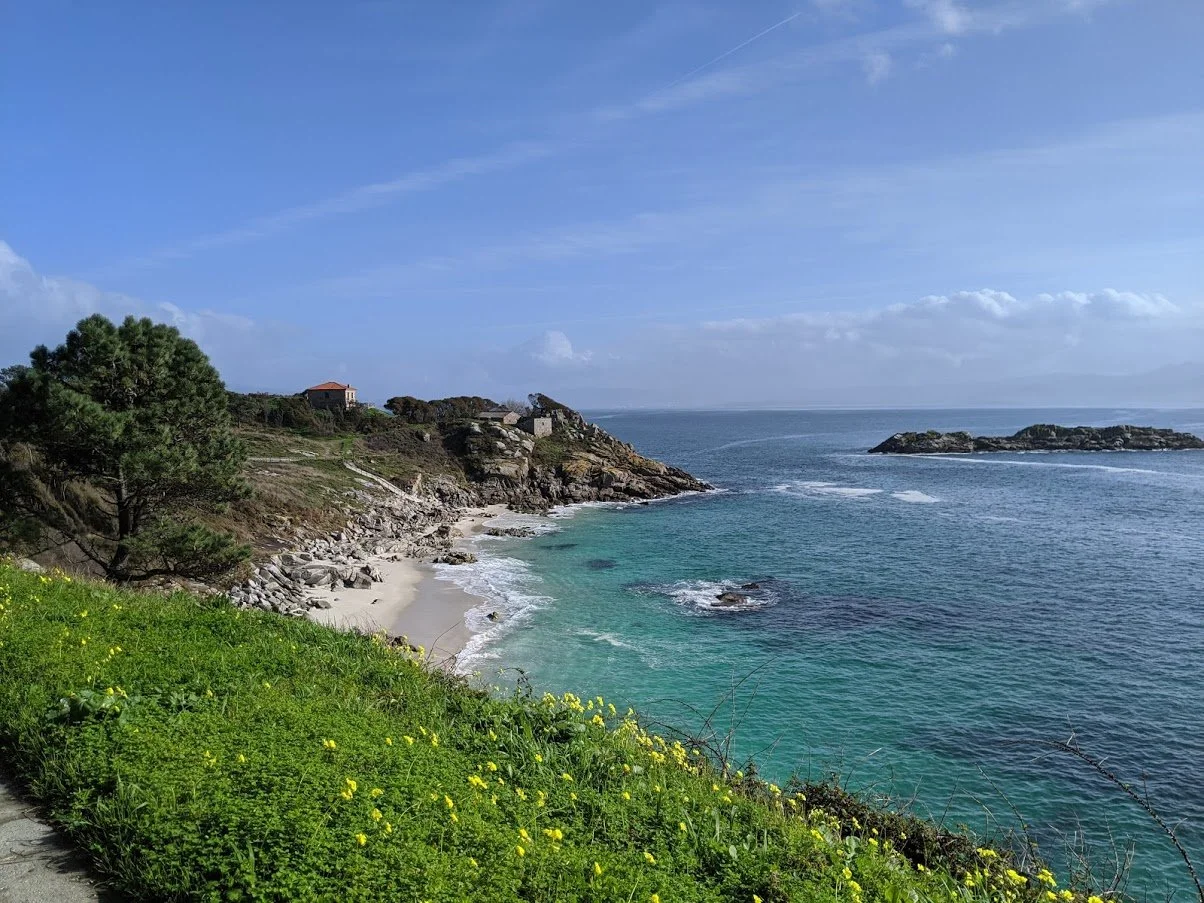
Once off the ferry it was clear to us what to do. Head in the opposite direction of the majority of our fellow passengers! Soon we were crossing a concrete breakwater that serves as a bridge between Isla de Monteagudo and Isla do Faro (Lighthouse Island). During low tide the bridge is an easy 200 yard passage. If you need to pass during high tide…well…pick your moment to dash over the wall very carefully! We experienced both tides, without getting drenched!
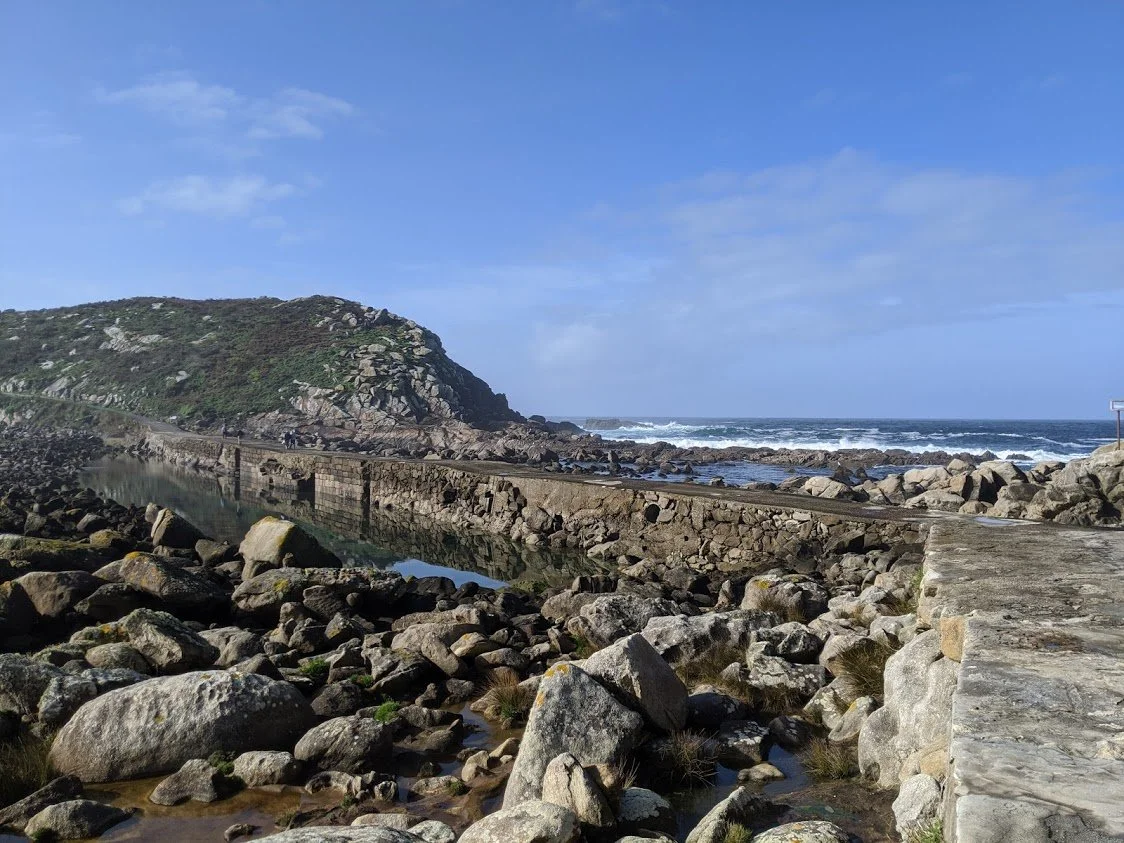
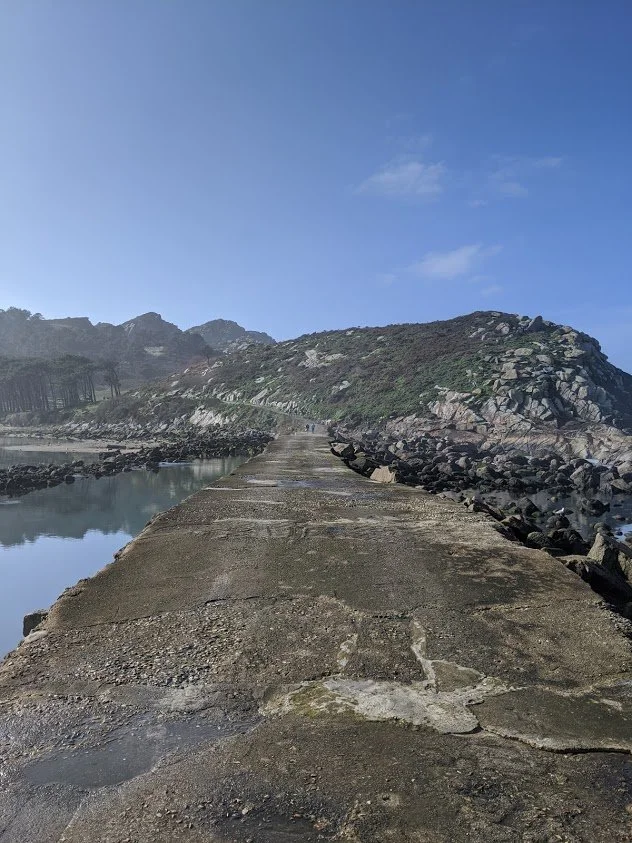
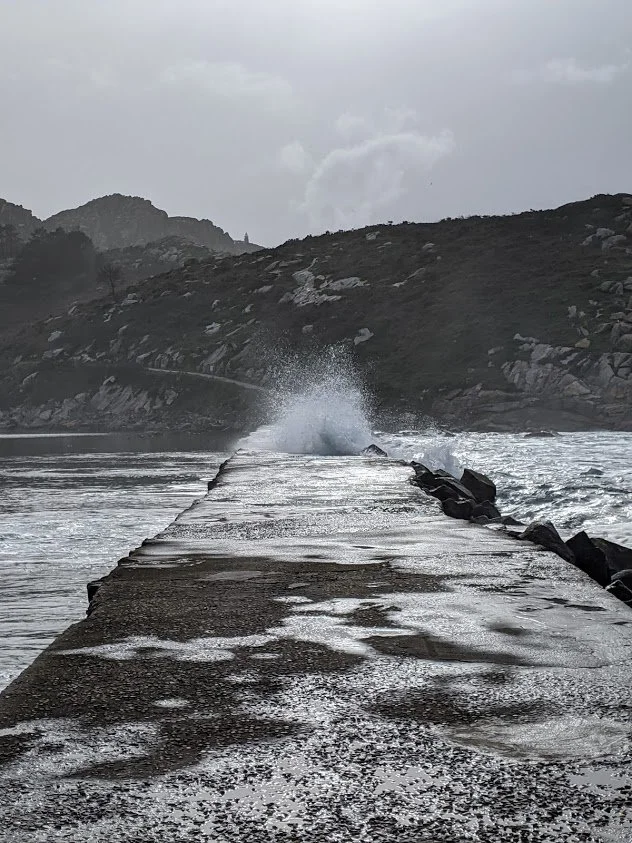
Once over the bridge we passed an empty beachfront campground (the only campground on the island) and started our journey along what is known as the Ruta do Faro da Porta or road to the lighthouse. This iconic landmark is one of several original lighthouses on the island yet it is now decommissioned.
The road to the lighthouse dips, twists and climbs its way through tall stands of pine, eucalyptus and bamboo occasionally bursting open to reveal stunningly beautiful views of the water below. The numerous steep views of the coastline and the crashing sea stopped us in our tracks in amazement. A quick glance over our shoulder and we realized that we were alone. All alone.
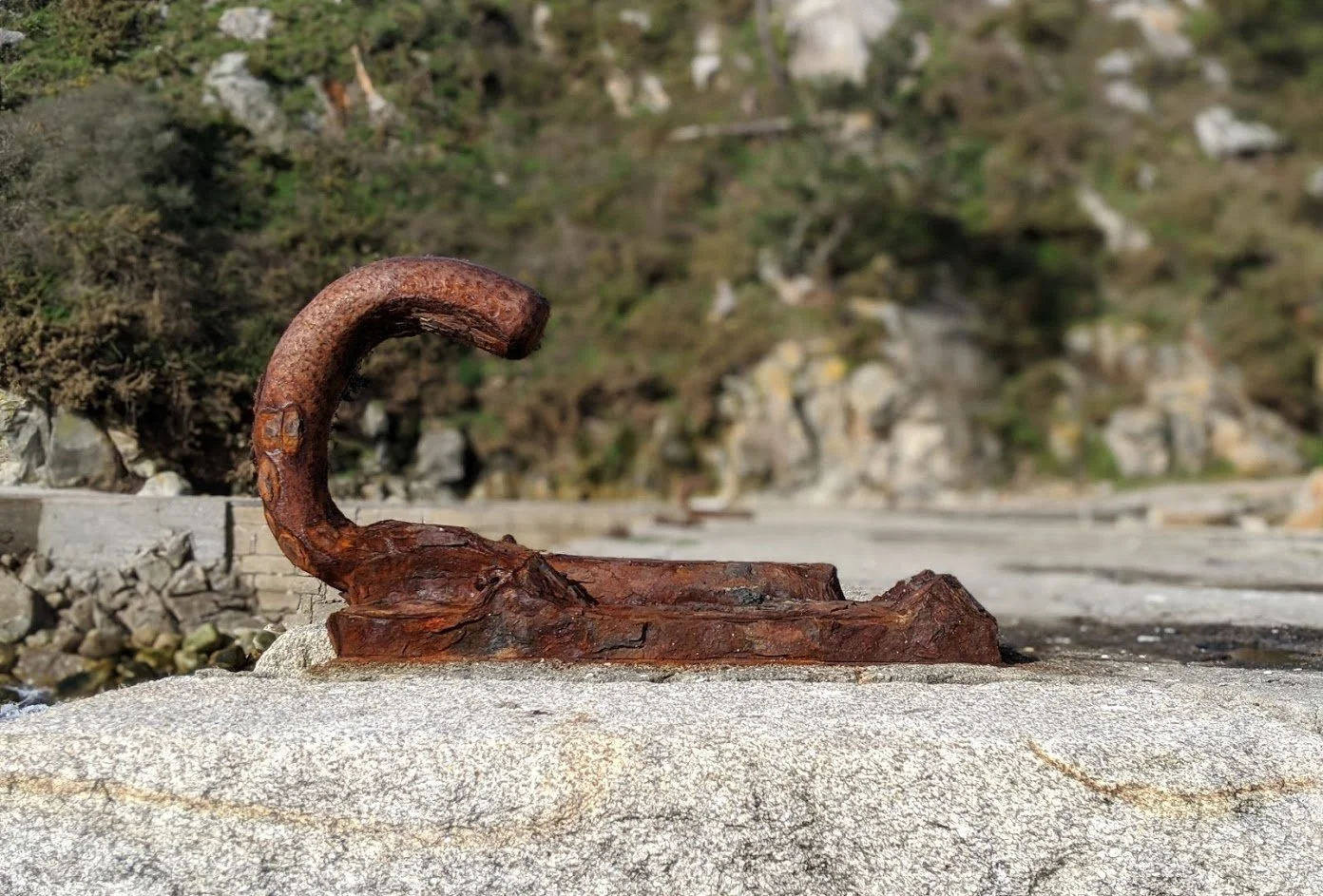
Along the way we encountered an ancient, decaying concrete pier jutting into the sea, with massive iron anchors bolted into the topside and several sets of stairs descending to the water. It was easy to imagine fishing boats docking to deliver their daily catch to the fish salting factory that at one time was a thriving part of the island’s commerce.
As we headed away from the pier and continued toward the lighthouse the path turned from an access road for park employees to something resembling a hand laid cobblestone road from Roman times. The transition gave us a distinct feeling of travelling back in time.
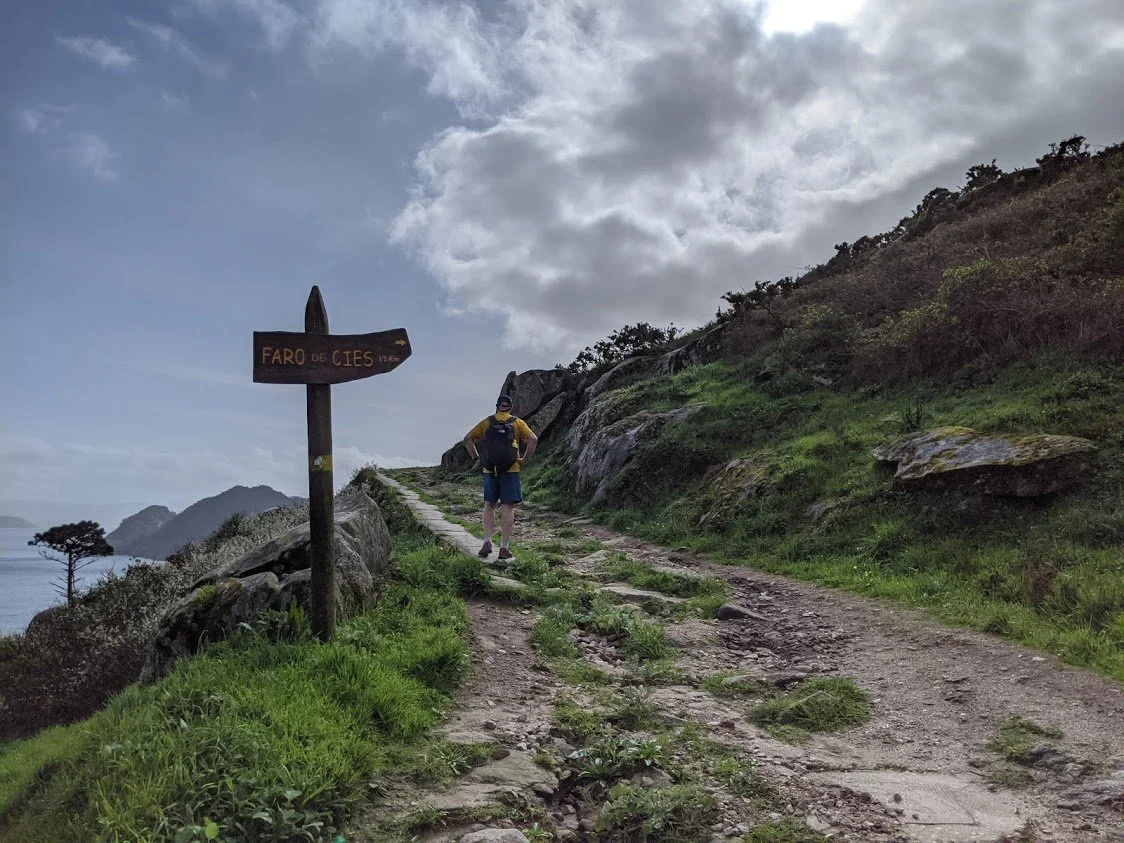
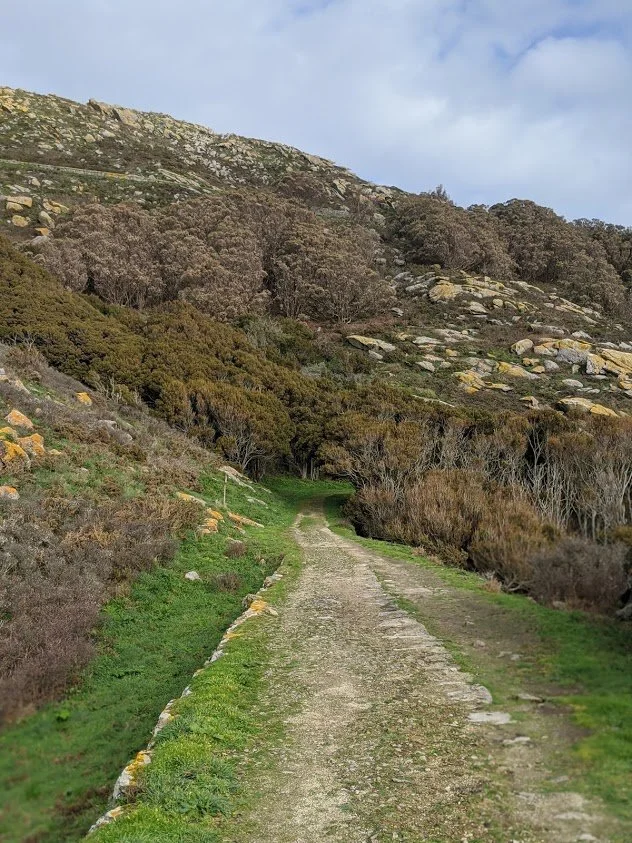
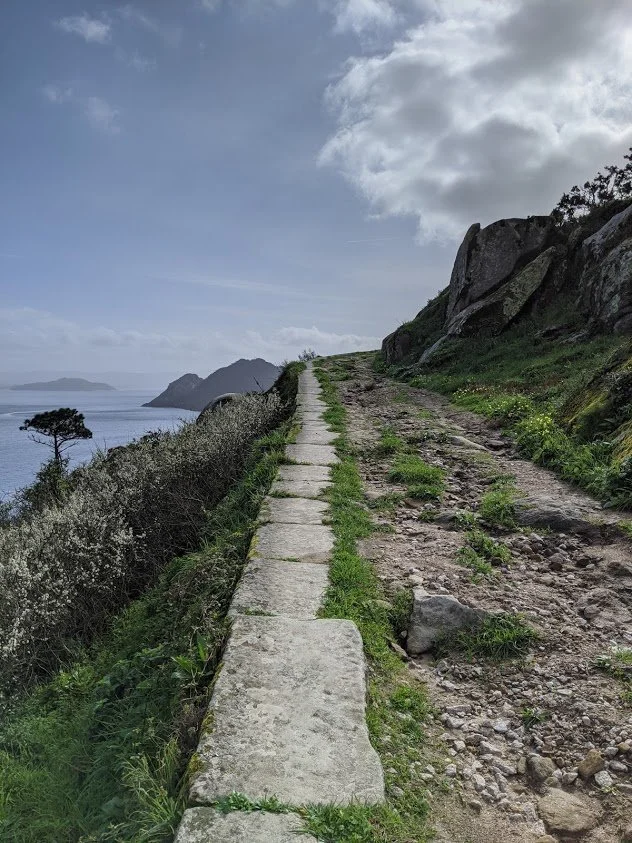
The rugged road continued until the Faro de Cies lighthouse came into view. Small in stature as lighthouses go it once served an important role, as all lighthouses do, in guiding ships into the port of Vigo as well as away from the treacherous rocky coastline. From our vantage point we could see the neighboring Isla de San Martino, an island even more remote than the one we were standing on.
Looking inland over boulder strewn mountains covered in scrub and lichen the color of papaya, we saw a second, much larger lighthouse sitting alongside an enormous satellite dish, both of which are situated on the highest point of the island. Seeing the lighthouse from such a vantage point made us curious as to how to reach it, so we reversed course down the same path in search of a connecting road or trail.
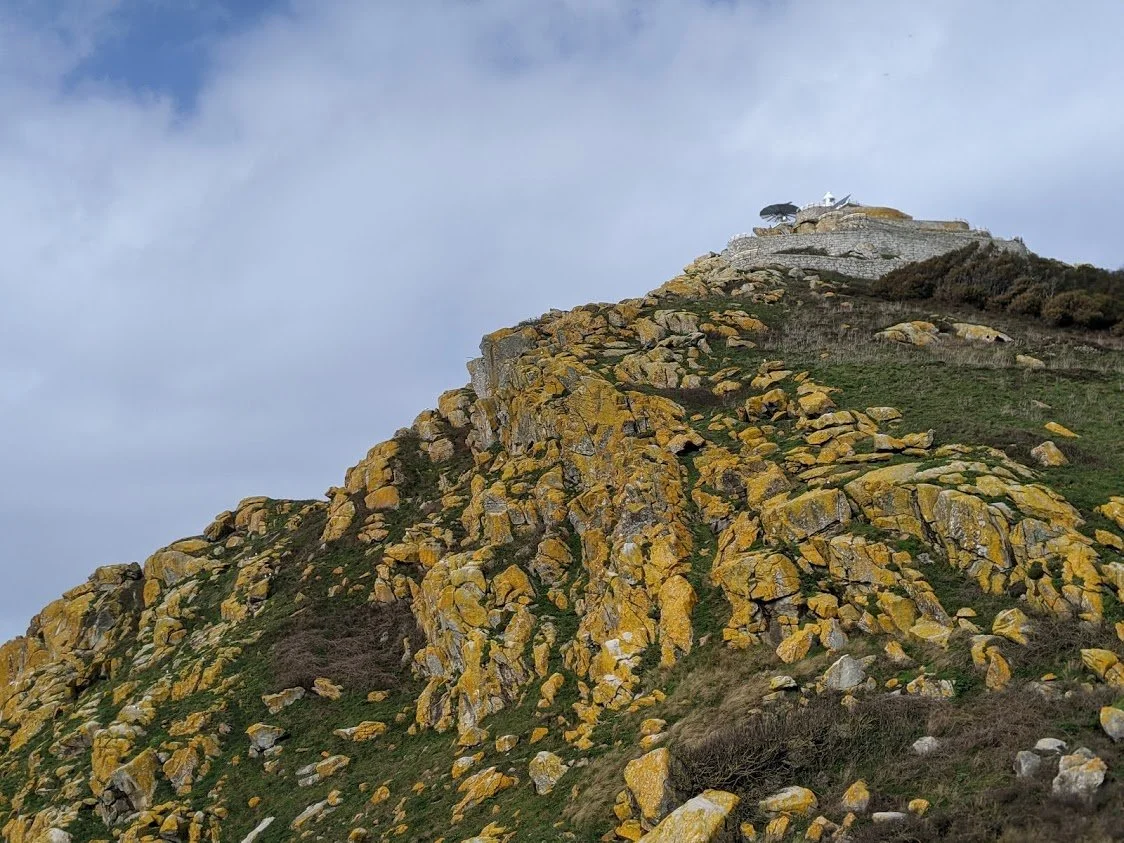
One of the luxuries of having enough time to explore is discovering a path not shown on any map or taking an unmarked, vegetated side road on the way to your next destination. On the way to the Monte Faro lighthouse we saw one such trail that took us to an overlook of astonishing steepness. The trail is topped off with an “eye-in-the-rock” formation that, it is said, at the right time of the month allows the sunrise to shine directly through the eye. We missed that morning spectacle but views of the ocean crashing against the rocks hundreds of feet below made the detour worth taking.
The Monte Faro lighthouse sits at nearly 600 feet above the ocean and is only accessible by walking as the road is closed to all but official vehicles. It is an exhilarating hike with ten increasingly steep hairpin turns covering several kilometers. This part of the island is subject to unpredictable and sometimes ferocious winds that seem to come out of nowhere. At the summit we found ourselves transfixed with the sweeping views as the clear skies, and mild weather, cooperated to provide panoramic views of the entire archipelago including rugged cliffs, forested interiors and white sand beaches. This is truly the most dramatic viewpoint of the Cies islands and is simply gorgeous.
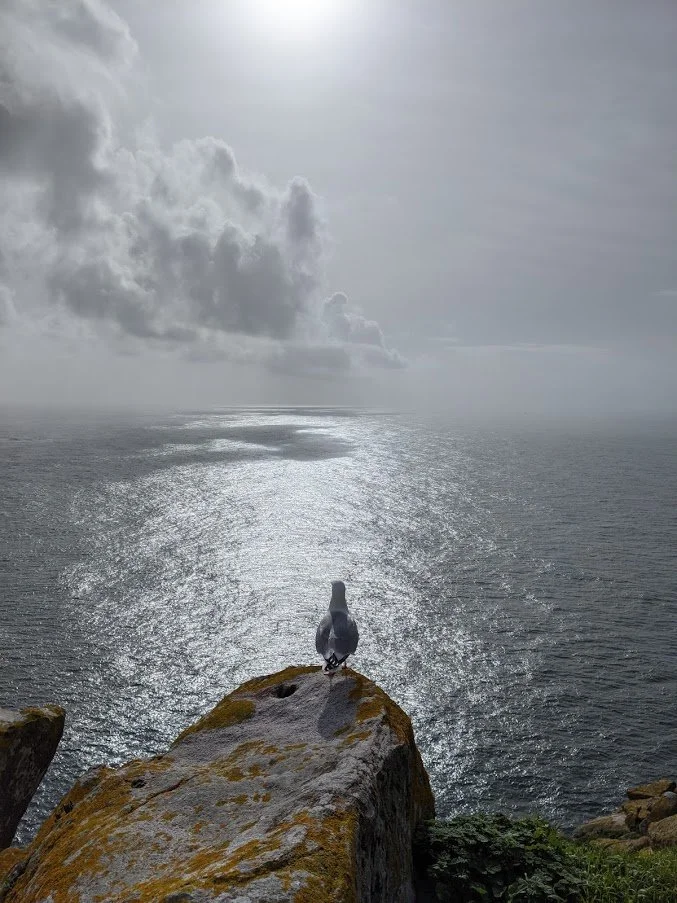
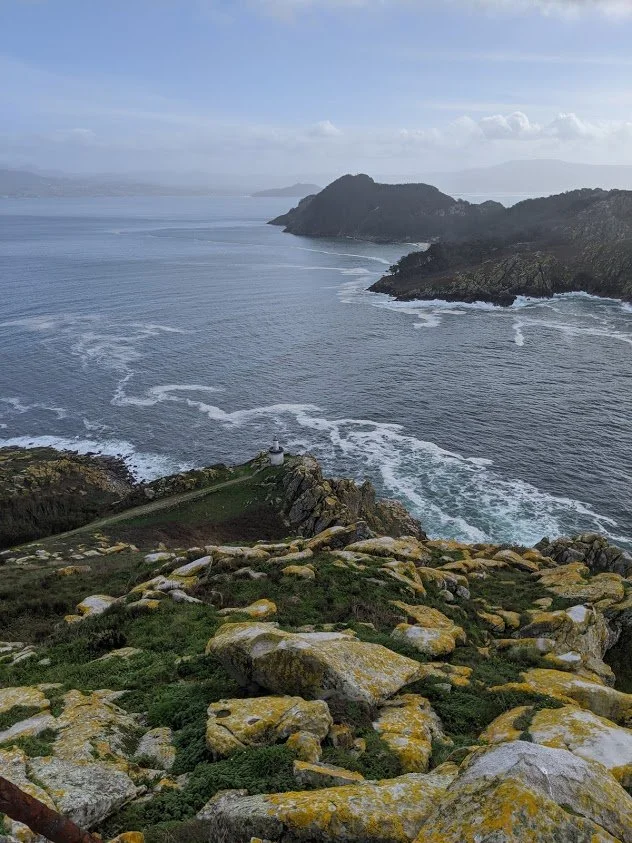
Full of wind-in-our-face excitement and with plenty of time to kill before the ferry departed back to Vigo we descended from the lighthouse in search of more undiscovered treasures. Retracing our steps over the ten switchbacks we steadily dropped back down to the road that follows the coast. On the way down we caught a glimpse of the first lighthouse that we visited. Although historically significant it appeared very small. Open spaces as vast as these will do that to your perception.
Not content to return to the harbor just yet we bushwhacked our way through a small singletrack trail that appeared to lead to the beach. And there we discovered an isolated trail that paralleled a thin, sugary strand of beach that would eventually lead to Rodas beach and the harbor.
After a short hike along the grassy trail we could see the breakwater that would be our final passage back to the ferry. Hoping that high tide was yet to come in we pressed on to the bridge to take our chances.
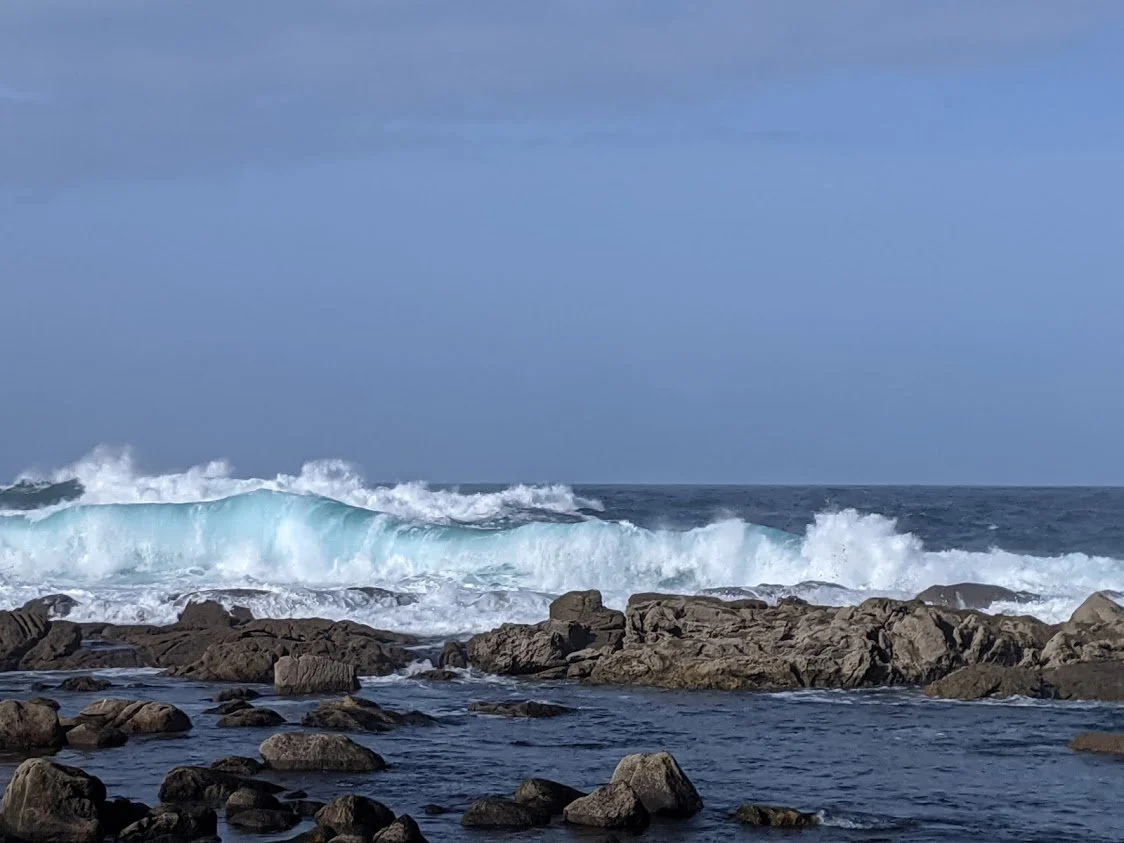
Oops…the high tide was in fact coming in and our 200 yard dash would need to be timed very carefully to avoid getting soaked. After several false starts our narrow window of opportunity opened and we made a run for it.
Once safe, and dry, on the other side we spent some time kicking around Rodas beach, taking some last minute photographs and looking for the perfect seashell to bring with us as a momento.
The Cies Islands are the Vigo estuary’s greatest treasure and an amazing national marine-terrestrial park. They are also one of the country’s most beautiful places, which is why the Romans named them the “islands of the gods”.
Thankfully, you don’t need to be a god, or goddess, to visit this Shangri La just off the coast of northern Spain. Mere mortals are welcome too!
SPAIN'S CIES ISLANDS TRAVEL TIPS
Ferry Services
The Cies Islands ferry route is currently operated by 2 ferry companies. In early February when we visited the island there were only two runs. During the summer the service runs up to 5 times per day with a sailing duration of around 45 minutes while the Mar de Ons service runs up to 9 times per day with a duration from 45 min. Prices can range between 20.00 to 35.00 euros per person.
Best time to visit
If you don’t like crowds then the off season, from late October to mid February can be the best time. It was for us! During the on season they cap the daily visits to 2000 people per day.
Food
There is a restaurant in the island that sells snacks and drinks. If you travel in the off season you may want to pack lunch and snacks as the restaurant may be closed or have limited items.
